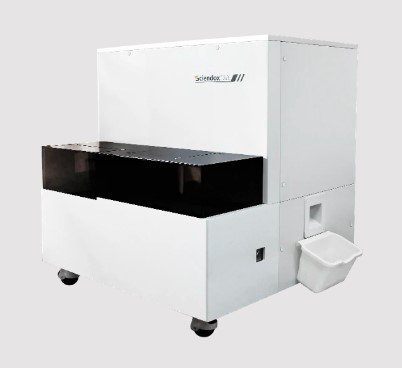Ensuring Compliance and Quality: Regulations for Storing Medical Lab and Phlebotomy Supplies
Summary
- Strict Regulations govern the use of bonded warehouses for storing medical lab and phlebotomy supplies in the United States.
- Facilities must adhere to specific requirements set forth by governing bodies to ensure the safety and integrity of supplies.
- Properly utilizing bonded warehouses is essential for maintaining compliance and quality in the medical laboratory and phlebotomy field.
Introduction
When it comes to storing medical lab and phlebotomy supplies, utilizing bonded warehouses is a common practice in the United States. These facilities play a crucial role in maintaining the integrity, safety, and quality of supplies. However, there are strict Regulations and requirements that must be followed to ensure compliance with legal standards and best practices. In this article, we will explore the Regulations and requirements for utilizing bonded warehouses for storing medical lab and phlebotomy supplies in the United States.
Regulations for Bonded Warehouses
Bonded warehouses that store medical lab and phlebotomy supplies are subject to a variety of Regulations to ensure the safety and security of these critical items. Some of the key Regulations governing the use of bonded warehouses include:
Compliance with FDA Regulations
One of the most important Regulations for bonded warehouses storing medical lab and phlebotomy supplies is compliance with FDA Regulations. The Food and Drug Administration (FDA) sets forth strict guidelines for the storage of medical products to prevent contamination and ensure quality. Bonded warehouses must adhere to these Regulations to maintain compliance and prevent any potential Legal Issues.
Adherence to Good Manufacturing Practices (GMP)
Another crucial requirement for utilizing bonded warehouses for medical lab and phlebotomy supplies is adherence to Good Manufacturing Practices (GMP). GMP standards are set by the FDA and other regulatory bodies to ensure the quality and safety of medical products. Bonded warehouses must follow these practices to maintain the integrity of supplies and prevent any issues with contamination or Quality Control.
Proper Documentation and Record-Keeping
Proper documentation and record-keeping are essential requirements for bonded warehouses storing medical lab and phlebotomy supplies. Facilities must maintain accurate records of all inventory, including details such as expiration dates, lot numbers, and storage conditions. This information is crucial for tracking supplies, ensuring Quality Control, and maintaining compliance with Regulations.
Requirements for Utilizing Bonded Warehouses
In addition to Regulations, there are specific requirements that facilities must meet when utilizing bonded warehouses for storing medical lab and phlebotomy supplies. These requirements are designed to ensure the safety, security, and quality of supplies. Some of the key requirements include:
Proper Storage Conditions
One of the most important requirements for utilizing bonded warehouses is the maintenance of proper storage conditions. Medical lab and phlebotomy supplies must be stored in a controlled environment that meets specific temperature and humidity conditions to prevent degradation and maintain product integrity. Facilities must have systems in place to monitor and regulate these conditions to ensure compliance.
Security Measures
Security measures are another essential requirement for utilizing bonded warehouses for medical lab and phlebotomy supplies. Facilities must have robust security protocols in place to prevent theft, unauthorized access, and tampering with supplies. This may include surveillance systems, restricted access areas, and monitoring of all incoming and outgoing shipments to ensure the security of supplies.
Quality Control Processes
Quality Control processes are fundamental requirements for utilizing bonded warehouses to store medical lab and phlebotomy supplies. Facilities must have procedures in place to inspect and verify the quality of incoming supplies, monitor inventory for expiration dates and condition, and implement protocols for handling and disposing of expired or damaged items. These processes are essential for maintaining the integrity and safety of supplies.
Conclusion
Utilizing bonded warehouses for storing medical lab and phlebotomy supplies in the United States is a critical practice for maintaining compliance, quality, and safety. By following strict Regulations and requirements, facilities can ensure that supplies are stored in optimal conditions, adhere to legal standards, and meet Quality Control measures. Properly utilizing bonded warehouses is essential for ensuring the integrity of supplies and upholding the standards of the medical laboratory and phlebotomy field.

Disclaimer: The content provided on this blog is for informational purposes only, reflecting the personal opinions and insights of the author(s) on the topics. The information provided should not be used for diagnosing or treating a health problem or disease, and those seeking personal medical advice should consult with a licensed physician. Always seek the advice of your doctor or other qualified health provider regarding a medical condition. Never disregard professional medical advice or delay in seeking it because of something you have read on this website. If you think you may have a medical emergency, call 911 or go to the nearest emergency room immediately. No physician-patient relationship is created by this web site or its use. No contributors to this web site make any representations, express or implied, with respect to the information provided herein or to its use. While we strive to share accurate and up-to-date information, we cannot guarantee the completeness, reliability, or accuracy of the content. The blog may also include links to external websites and resources for the convenience of our readers. Please note that linking to other sites does not imply endorsement of their content, practices, or services by us. Readers should use their discretion and judgment while exploring any external links and resources mentioned on this blog.
